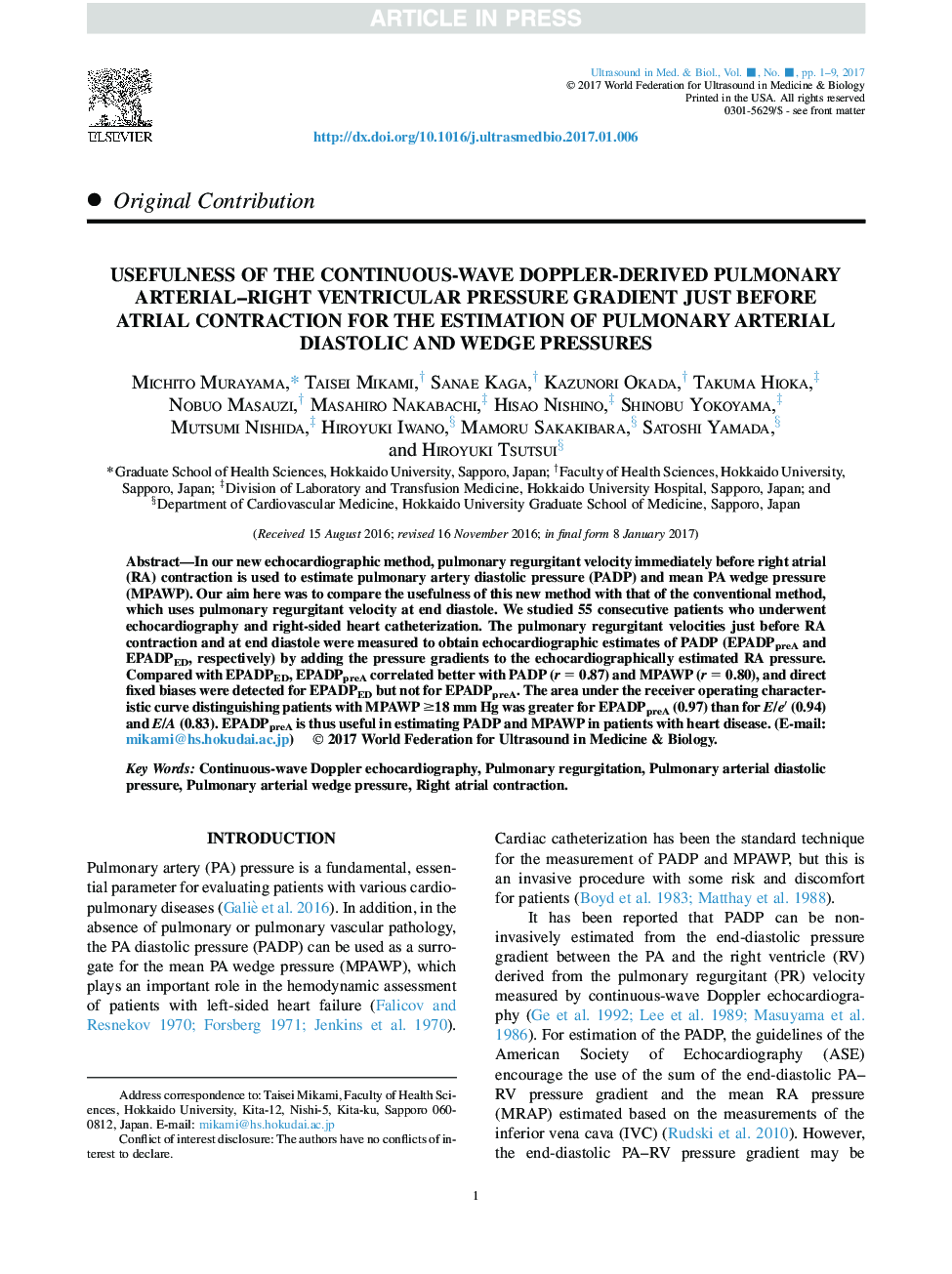| Article ID | Journal | Published Year | Pages | File Type |
|---|---|---|---|---|
| 5485951 | Ultrasound in Medicine & Biology | 2017 | 9 Pages |
Abstract
In our new echocardiographic method, pulmonary regurgitant velocity immediately before right atrial (RA) contraction is used to estimate pulmonary artery diastolic pressure (PADP) and mean PA wedge pressure (MPAWP). Our aim here was to compare the usefulness of this new method with that of the conventional method, which uses pulmonary regurgitant velocity at end diastole. We studied 55 consecutive patients who underwent echocardiography and right-sided heart catheterization. The pulmonary regurgitant velocities just before RA contraction and at end diastole were measured to obtain echocardiographic estimates of PADP (EPADPpreA and EPADPED, respectively) by adding the pressure gradients to the echocardiographically estimated RA pressure. Compared with EPADPED, EPADPpreA correlated better with PADP (r = 0.87) and MPAWP (r = 0.80), and direct fixed biases were detected for EPADPED but not for EPADPpreA. The area under the receiver operating characteristic curve distinguishing patients with MPAWP â¥18 mm Hg was greater for EPADPpreA (0.97) than for E/eâ² (0.94) and E/A (0.83). EPADPpreA is thus useful in estimating PADP and MPAWP in patients with heart disease.
Related Topics
Physical Sciences and Engineering
Physics and Astronomy
Acoustics and Ultrasonics
Authors
Michito Murayama, Taisei Mikami, Sanae Kaga, Kazunori Okada, Takuma Hioka, Nobuo Masauzi, Masahiro Nakabachi, Hisao Nishino, Shinobu Yokoyama, Mutsumi Nishida, Hiroyuki Iwano, Mamoru Sakakibara, Satoshi Yamada, Hiroyuki Tsutsui,
